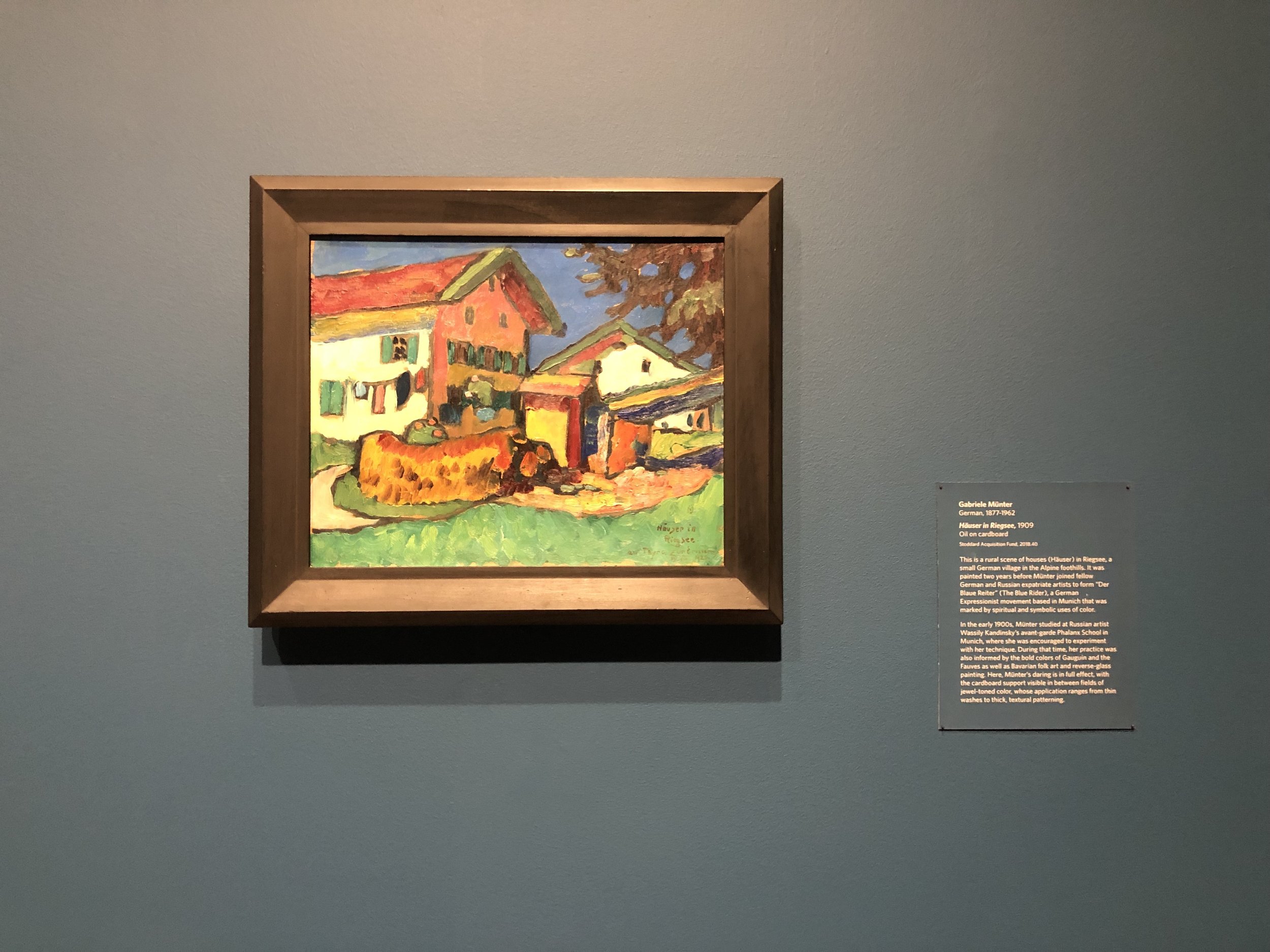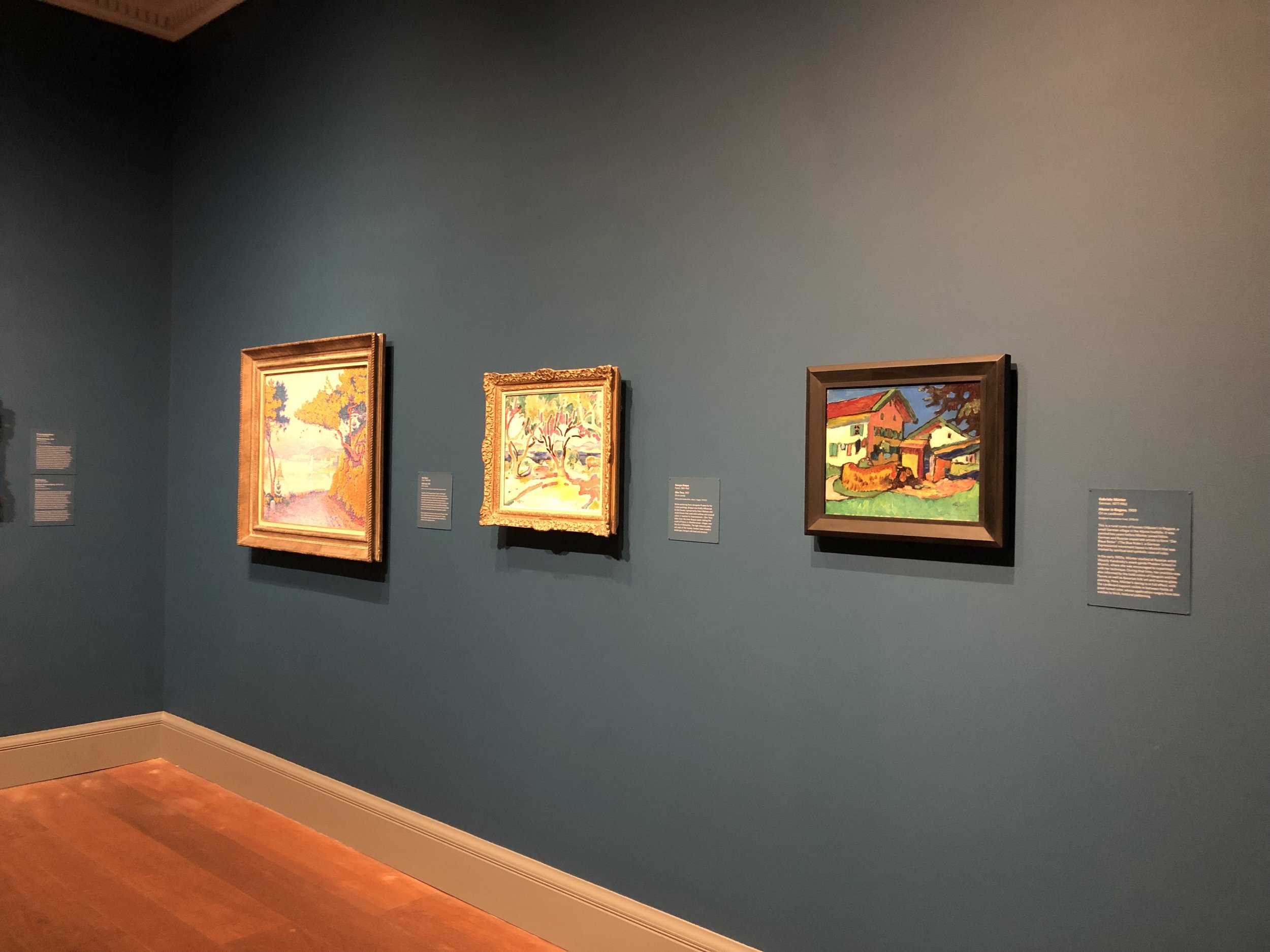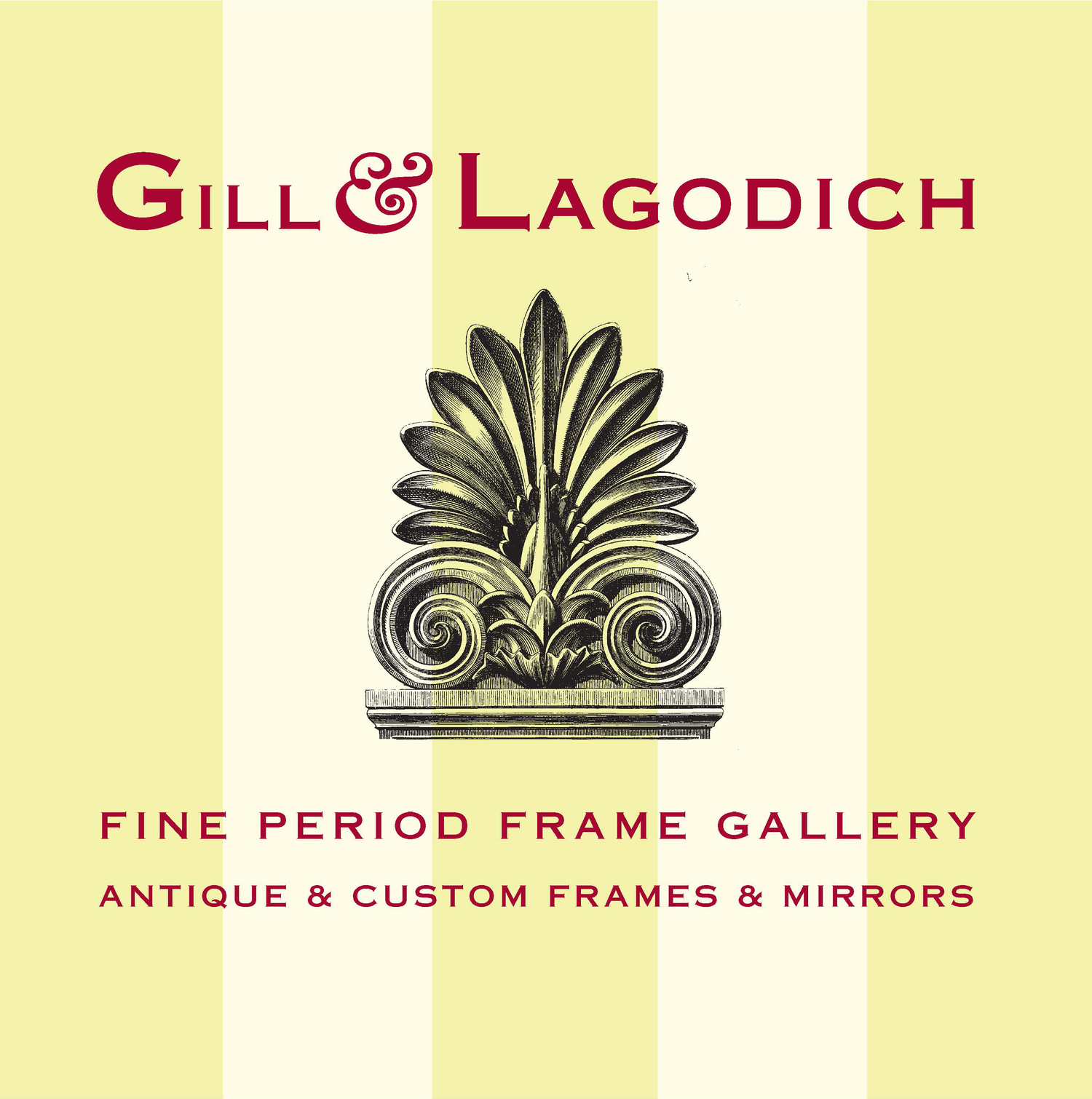WORCESTER ART MUSEUM, MASSACHUSETTS
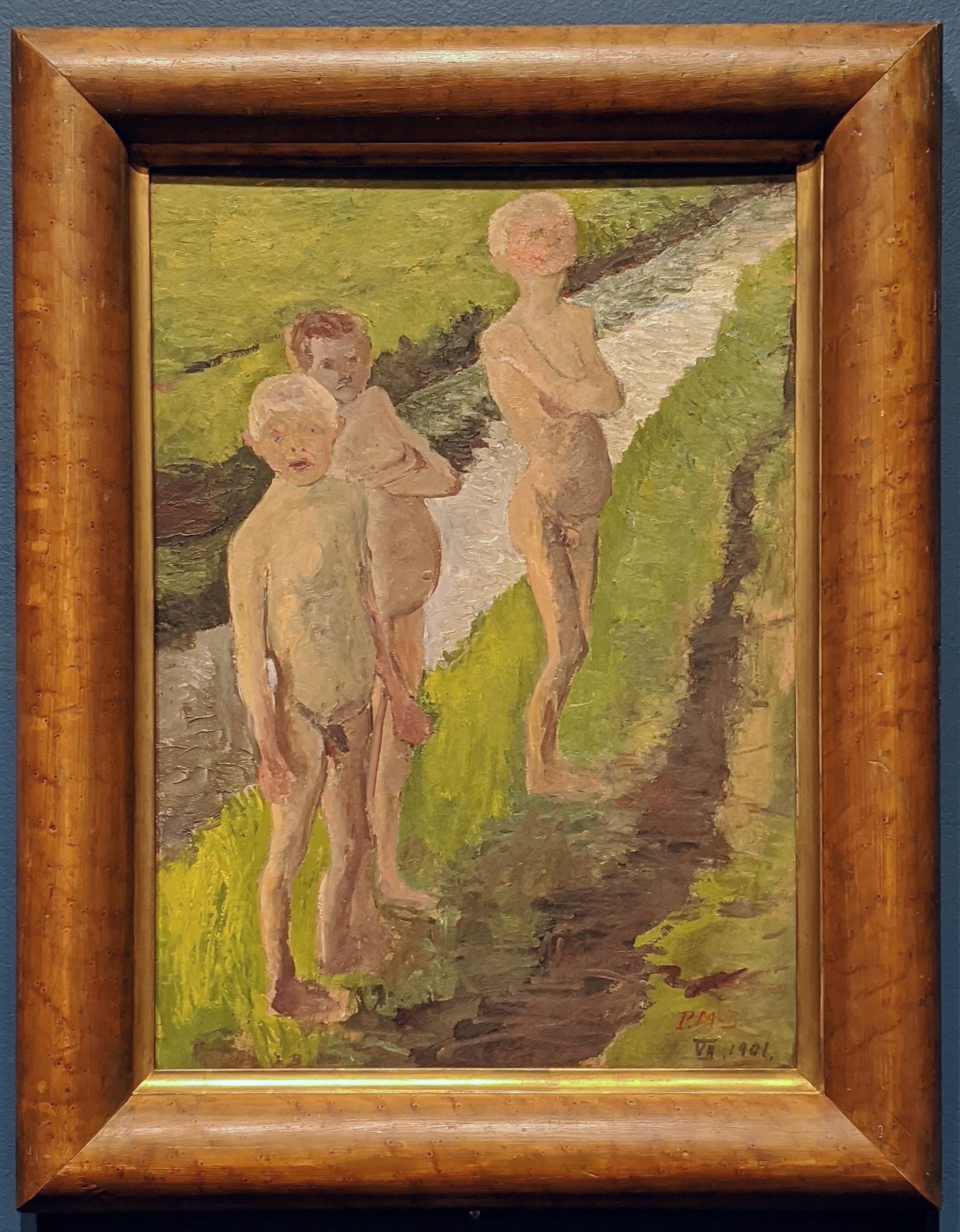
PAULA MODERSOHN-BECKER (1876–1907)
Three Boys Bathing by a Canal, 1901, Wurmsche Tempera on cardboard, mounted on wood, 54.3 × 39.4 cm (21-3/8 × 15-1/2 in.). Mid-19th century American molding frame, faux bois painted wood, bolection profile, gilded liner, molding width: 3-1/4 in. “Modersohn-Becker’s earliest work focuses on the rural landscape of northwestern Germany. Along with other artists and writers—among them her husband Otto Modersohn, poet Rainer Maria Rilke, and his wife Clara Rilke-Westhoff—she found inspiration in a pre-industrial peat-farming community in Worpswede. During several visits to Paris beginning in 1899, however, she encountered the work of Van Gogh, Cézanne, and Gauguin. This painting, created shortly after her return to Worpswede, demonstrates the influence of these artists, specifically the vivid palette, asymmetrical composition, and experimentation with new paints and surface texture. Most importantly, this painting shows her engagement with the nude and introduction of figures into her landscapes. Due to the scarcity of models in Worpswede, she looked to the local population—here, three malnourished boys. Her unique approach to painting—often called proto-Expressionist—was tragically cut short, when she died at age 31 shortly after giving birth.” —museum label Painting: Stoddard Acquisition Fund
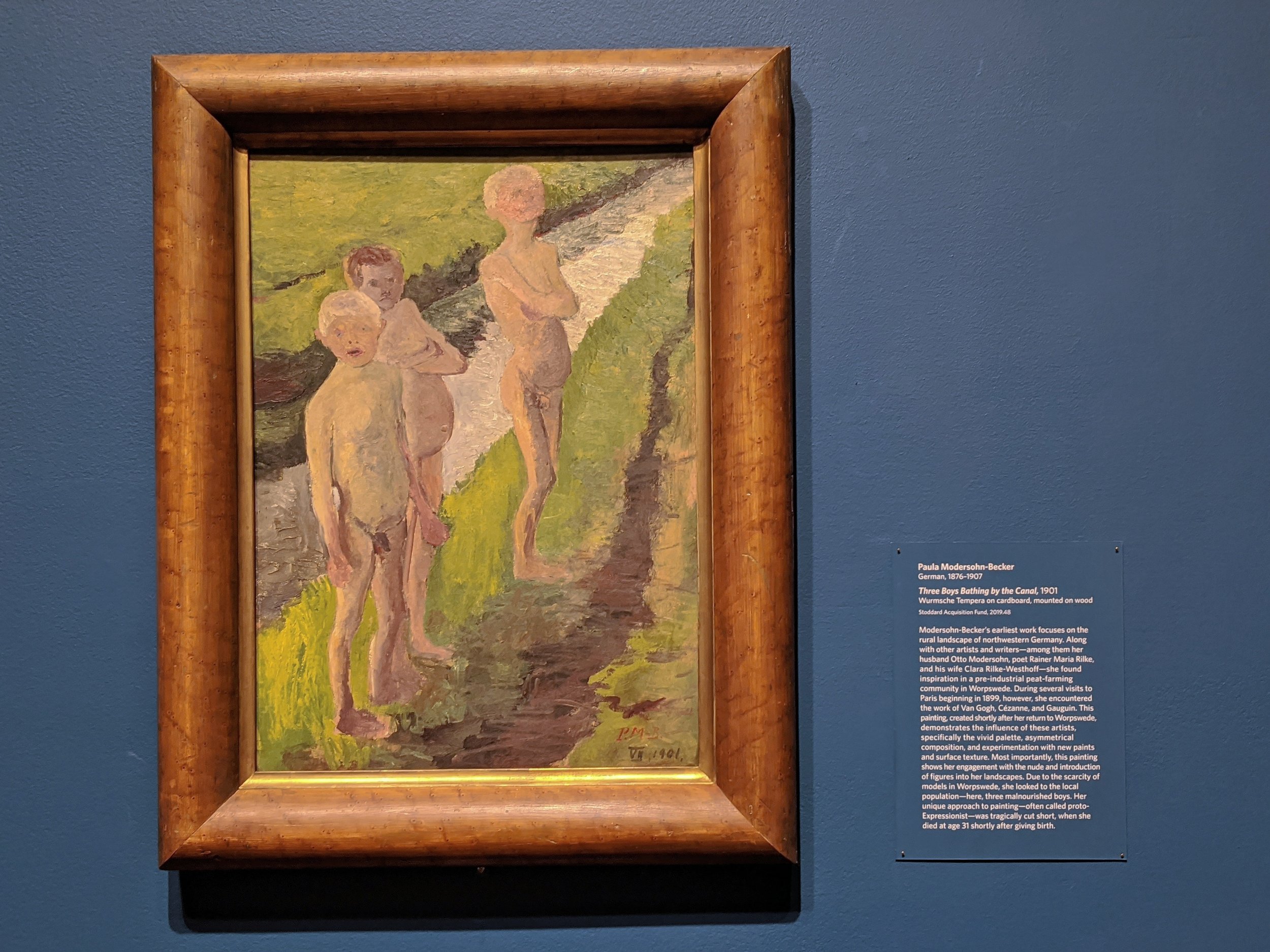

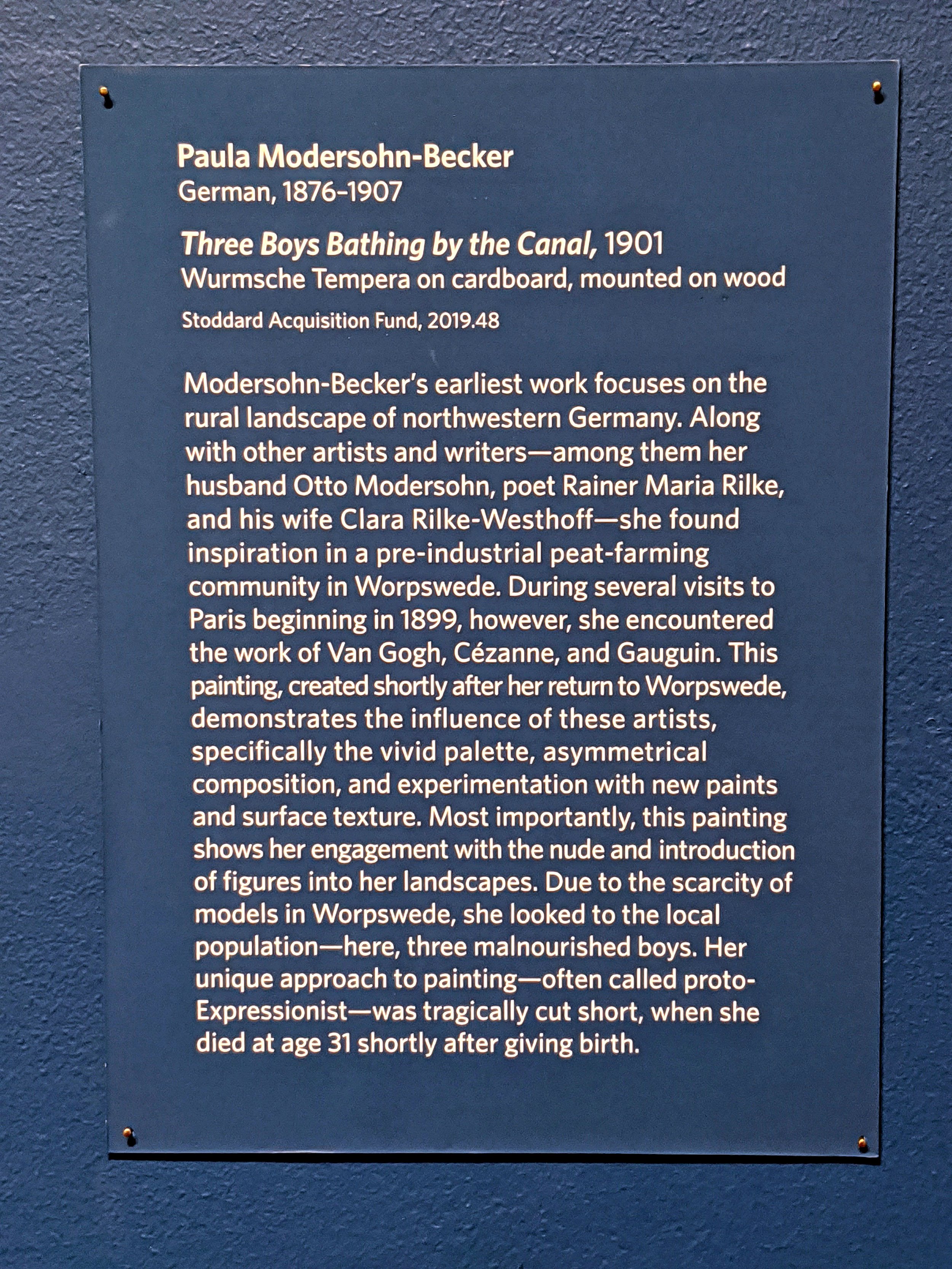

GABRIELE MUNTER (1877–1962)
Houses in Riegsee, 1909, oil on pressed board, 32.9 × 40.8 × 0.2 cm (12-15/16 × 16-1/16 × 1/16 in.) Custom-made replica first-quarter 20th-century frame; Paul Klee inspired design, ebonized rough sawn wood, molding width 2-1/4 in. “This is a rural scene of houses (Häuser) in Riegsee, a small German village in the Alpine foothills. It was painted two years before Münter joined fellow German and Russian expatriate artists to form “Der Blaue Reiter” (The Blue Rider), a German Expressionist movement based in Munich that was marked by spiritual and symbolic uses of color. In the early 1900s, Münter studied at Russian artist Wassily Kandinsky’s avant-garde Phalanx School in Munich, where she was encouraged to experiment with her technique. During that time, her practice was also informed by the bold colors of Gauguin and the Fauves as well as Bavarian folk art and reverse-glass painting. Here, Münter’s daring is in full effect, with the cardboard support visible in between fields of jewel-toned color, whose application ranges from thin washes to thick, textural patterning.” —museum label, Painting: Stoddard Acquisition Fund.
